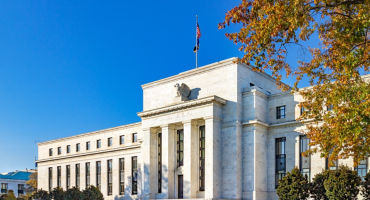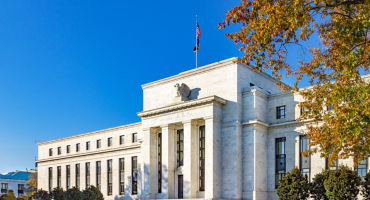- Macro Strategist
Skip to main content
- Funds
- Insights
- Capabilities
- About Us
- My Account
United States, Institutional
Changechevron_rightThank you for your registration
You will shortly receive an email with your unique link to our preference center.
The views expressed are those of the author at the time of writing. Other teams may hold different views and make different investment decisions. The value of your investment may become worth more or less than at the time of original investment. While any third-party data used is considered reliable, its accuracy is not guaranteed. For professional, institutional, or accredited investors only.
In the coming months, I’ll be sharing a series of insights on the Trump administration’s efforts to downsize the federal government and what they could mean for the economy, industry, and markets. I begin with Trump’s focus on deregulation. Through the first 30 days of his second term, he signed more than 70 executive orders and, as promised during his campaign, reducing regulations was one of his key objectives. In this note, I look at the state of US regulation from an economic cost standpoint and explain why cutting red tape should yield several benefits, including for growth and inflation. I also touch on some of the potential drawbacks of this approach.
The US government’s Federal Register, a publication that documents all federal rules and regulations, offers a good indication of the growth in red tape over time. The number of pages in the Federal Register has risen steadily since it was first established in the 1930s and only two presidents have overseen a meaningful decline: Ronald Reagan and, in his first term, Donald Trump (Figure 1).
A study by the National Association of Manufacturers estimated the total cost of regulations in the US in 2022 at roughly US$3.1 trillion or about 12% of GDP.1 That marked an increase of US$465 billion from a decade earlier and includes the cost of compliance for businesses, individuals, and state and local governments.
For businesses in particular, the cost of compliance was pegged at US$1.72 trillion or an average of US$277,000 per company — equivalent to 19% of the average firm’s payroll expenses. The cost burden was significantly higher for small companies at almost US$15,000 per employee for a company with fewer than 50 employees versus about US$12,000 for a company with more than 100 employees.
The cost of regulation skyrocketed under the Biden administration, clocking in at 6.5% of GDP over the course of his four-year term (Figure 2). A sizable chunk of this (about one quarter of the total) was driven by stricter auto emissions standards scheduled to take effect in 2027. In contrast, the cost of regulation grew by an average of 0.3% per year during Trump’s first term.
In his first term, Trump issued an executive order requiring agencies to identify two existing regulations for repeal when proposing a single new regulation. Trump’s new Executive Order, titled “Unleashing Prosperity Through Deregulation,” ups the ante significantly with a new “10 for 1” rule. It also mandates that the total incremental cost of all new regulations established in fiscal year 2025 must be “significantly less than zero” — again a more stringent requirement than in Trump’s first term, when he mandated the cost “not exceed zero.”
For the record, Trump did manage to keep the incremental cost of new regulations just below zero in 2018. Thus far in his second term, he has revoked 78 Biden-era orders, including regulations related to DEI, climate, immigration, and COVID-19.
So, what might Trump’s approach mean for businesses? I would expect this deregulation drive to reduce administrative costs, increase efficiency, encourage competition, and possibly spur innovation and investment spending. That said, the administration’s overall policy mix will ultimately determine whether the environment is favorable for new and innovative ventures. For instance, current policy uncertainty is so high that investments may be stalled as companies await clarity in the aggregate policy arc.
On its own, deregulation implies stronger growth and lower inflation over time. However, as with all regulatory shifts, the implementation details will determine the true benefits.
Finally, it’s important to note that there will be some redistributive effects of this shift — that is, there will be some economic winners and some losers. For example, I would expect smaller companies, which have less ability to scale the burden of new regulations, to benefit more than large ones. In addition, the Trump administration’s efforts to undo climate-related regulations will level the playing field between fossil fuels and green energy, with a focus on spurring production of the former (possibly at the risk of emissions standards being achieved later than would be ideal for the economy). And in the financial sector, deregulation could be a positive in the credit creation space for banks, where higher capital requirements have shackled their ability to lend to the real economy, leaving private companies to gain share.
With all of these changes, care must be taken to ensure the pendulum does not shift too far the other way and create an environment in which companies or individuals could be harmed by lax supervision or encouragement of excessive risk-taking.
1Source: National Association of Manufacturers, “The Cost of Federal Regulation to the US Economy, Manufacturing, and Small Business,” October 2023.
Expert

FOMC: Easing into uncertainty
Continue readingPrivate credit outlook for 2026: 5 key trends
Continue readingThe rising tide of AI: How it could lift US productivity, growth, and profits
Continue readingAre hedge funds the missing ingredient?
Continue readingRapid Fire Questions with Ross Dilkes
Continue readingInvesting in 2026: prepare for inflationary growth
Continue readingURL References
Related Insights
Stay up to date with the latest market insights and our point of view.
Thank you for your registration
You will shortly receive an email with your unique link to our preference center

FOMC: Easing into uncertainty
Fixed Income Portfolio Manager Jeremy Forster profiles the Fed's December rate cut, labor market trends, inflation pressures, and the role of anticipated changes to FOMC leaders in 2026.

Private credit outlook for 2026: 5 key trends
Our private credit experts discuss five themes driving the asset class’s 2026 outlook, including public/private convergence, changing credit profiles, the growth of retail, and much more.

The rising tide of AI: How it could lift US productivity, growth, and profits
From an economic and market standpoint, a lot is riding on the future of artificial intelligence. Macro Strategist Juhi Dhawan sees plenty of reasons for excitement but also a need for patience along the way.

Are hedge funds the missing ingredient?
Inflation, volatility, and valuations — they all raise questions about portfolio diversification and resilience. Multi-Asset Strategists Nanette Abuhoff Jacobson and Adam Berger explain why multi-strategy and equity long/short hedge funds could provide the answers. They offer insights on adding allocations to a traditional portfolio mix and a recipe for manager selection.

Monthly Market Review — October 2025
A monthly update on equity, fixed income, currency, and commodity markets.

Rapid Fire Questions with Ross Dilkes
In this edition of “Rapid Fire Questions,” fixed income portfolio manager Ross Dilkes shares his views on the Asia credit market—covering the macro outlook, China’s momentum, the most compelling opportunities across the region, and key risks shaping the next 12 months.

Investing in 2026: prepare for inflationary growth
Macro Strategists John Butler and Eoin O'Callaghan share their annual macro outlook and discuss likely implications for markets and investors. They outline four potential scenarios graded by level of probability.

Is all that glitters still gold?
Gold has delivered impressive gains thus far in 2025, but what does that say about market risks and the recent strong returns of stocks? Multi-Asset Strategist Nanette Abuhoff Jacobson offers her take on the precious metal and the case for diversification in today’s market.

Questioning US credit quality
Fixed income strategist Amar Reganti examines questions surrounding US creditworthiness.
By

Chart in Focus: Is the Fed rate cut positive for risk?
In this edition of Chart in Focus, we examine how the Fed’s long-awaited interest rate cut may influence risk assets.

Chart in Focus: Three reasons to keep the faith in US credit quality
Our fixed income experts highlight the resilience of US institutional credibility.
URL References
Related Insights
© Copyright 2025 Wellington Management Company LLP. All rights reserved. WELLINGTON MANAGEMENT ® is a registered service mark of Wellington Group Holdings LLP. For institutional or professional investors only.
Enjoying this content?
Get similar insights delivered straight to your inbox. Simply choose what you’re interested in and we’ll bring you our best research and market perspectives.
Thank you for joining our email preference center.
You’ll soon receive an email with a link to access and update your preferences.
Monthly Market Review — October 2025
Continue readingBy